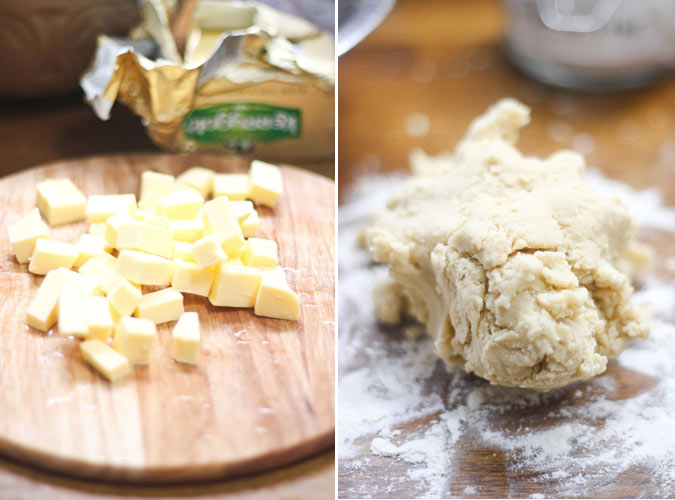
Well, well, well. Not so tough now, are you pastry? Eh?!
Who knew the simplistic combination of flour, butter and water could be such an outrageous pain in the arse. It’s been three years since I first discovered the fickle nature of pastry and my half-baked victory against its viciousness. In the interim, I’ve been perfectly satisfied with buying shop-bought pastry.
But then, out of the blue, I almost unthinkingly conquered my shortcrust trepidation.
I wanted to make some mini quiches for a recipe idea I had. But my local shop had run out of the good ol’ ready-to-roll shortcrust and I didn’t fancy a trip further afield for ingredients.
“I’ll just make it myself,” I thought, with the cool confidence of the nonchalant baker.
Before I knew it, it was some (considerable) time later and I was tucking into a crisp, biscuitty bottomed quiche feeling really very pleased with myself.
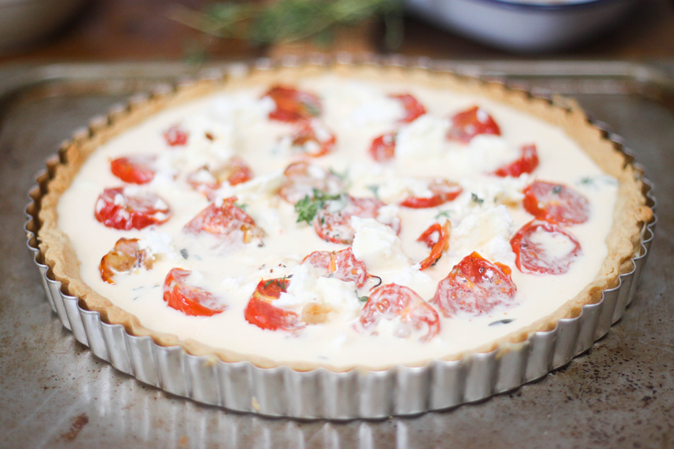
So what had changed in those three years?
Well, I am pleased to say that I am considerably more cool-headed in the kitchen theses. Whereas three years ago every little mistake was seen as an EPIC FAILURE, now I am able to brush off my kitchen imperfections with little more than a “Shit Happens” shrug. That confidence is key to my success.
Secondly, I am in a new kitchen. It has more space and it’s colder. We lived on the fourth floor of a very modern block of flats and it was generally roasting. We also had a laughably teeny fridge which struggled to keep the milk cold and never really penetrated our lovely full-fat Kerrygold butter. The fridge in our new house is practically Herculean in comparative strength and the butter is pretty darned cold.
Thirdly, once I had assembled my flour and my very cold butter, I plunged my hot hands into iced water before handling the butter at all.
I think the combination of these key elements led to my success in what turned out to be a week-long pastry making frenzy. My mini quiches were the first success and they were soon followed by a delightful almond and blueberry tart. The week was finished off with a satisfying tomato and thyme tart. I gained a few more pounds but you know what? It was worth it.
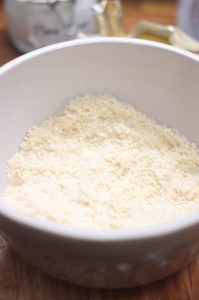
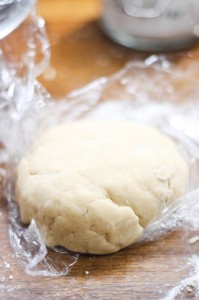
What you need for a good Shortcrust Pastry
225g of plain flour
Pinch of salt or a generous tablespoon of sugar (depending on whether you’re doing sweet or savoury)
100g of cold butter
3 to 4 tablespoons of cold water
Start by sieving the flour into a large bowl.
Plunge your hands into a bowl of ice and water, so that they are really flippin’ cold. Pat them dry before cutting the cold butter into small cubes.
Add the butter to the flour. Plunge your hands into the cold water again and pat dry again. Now use your fingers to gently rub the butter in to the flour until it resembles breadcrumbs. This will take about ten minutes and I did the plunge/pat-dry routine with my hands halfway through for good measure.
Now add two tablespoons of cold water and start to bring the mixture together into a dough. Don’t over work it too much. Add another tablespoon and bring it together. You will probably need the fourth tablespoon but it’s always better to add slowly rather than being unable to take away.
Knead the dough ball ever so slightly but you really don’t want to do too much to it at this stage. Work it together into a doughball and cover in clingfilm, leaving to cool in your fridge for 30 minutes.
Take out the doughball and loosely unwrap the clingfilm. Using clingfilm as a shield between the rolling pin and the dough and your work counter, roll it out until it’s about 2cm thick and will fit your tart tin. Transfer it to your tart tin and carefully press the dough into the tin, letting the excess pastry fold over the side.
Now you can blind bake your tart base. Pre-heat your oven to Prick the base with a fork and place a large sheet of baking paper over the base and sides. Fill the baking paper with baking beans (lots of heavy dried beans will do) and bake in a pre-heated oven 180C/160C fan/Gas Mark 5 for 15 to 20 minutes.
Remove from the oven and discard the baking beans and baking paper. Return the pastry base to the oven for 10 to 15 minutes, until it is biscuitty brown.
At this stage you can take your tart in any direction you want. You can add roasted tomatoes, feta cheese and thyme before adding a quiche egg-and-cream mix for a savoury tart. Or you can use it to make sweet treats like the blueberry tart I mentioned. I already have this fig and almond recipe bookmarked for Christmas dinner because, yes, I am already planning that meal.
Whatever you do eventually with your pastry, the important thing to remember is that it takes practice. My first attempt was a total write off. Three years and about eight attempts later, I’ve just about got it. Just about.
I’ll keep you updated on future successes and failures. In the meantime, happy baking!
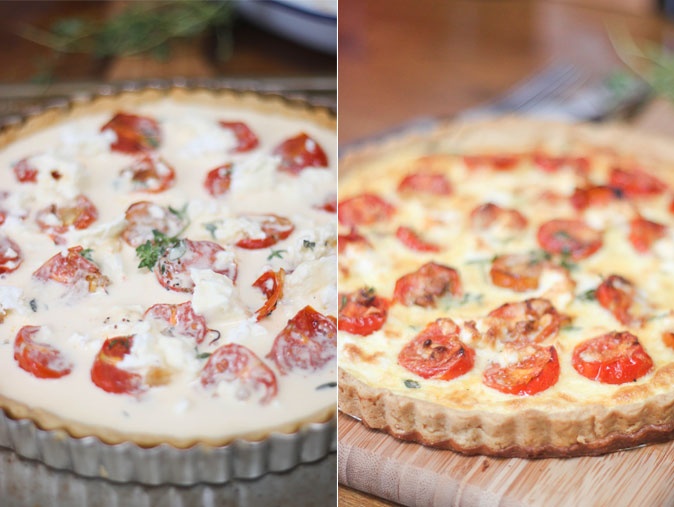
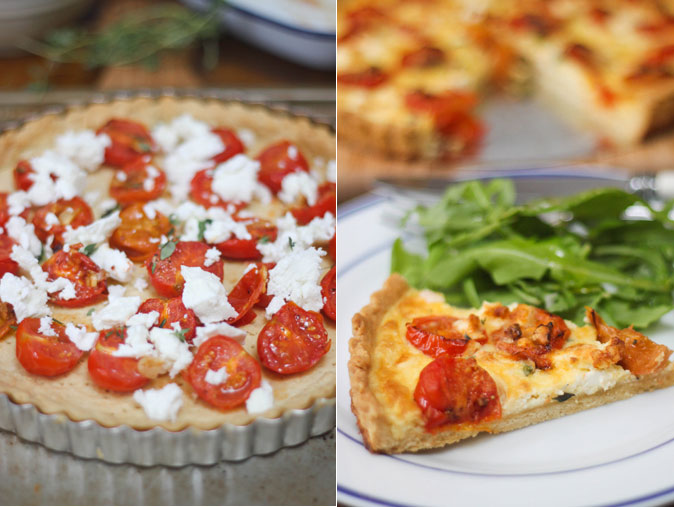
Categories: Baking
August 16, 2012 at 12:08 pm
You’re dead right about the cold thing. My Home Economics teacher told me years ago to always make sure everything that touches the pastry is cold and I’ve never had a spot of bother with pastry dishes since. I’d even go as far as to say I pride myself on my pastry making skills now!
August 16, 2012 at 8:20 pm
Fantastic! I really found it made a massive difference and am convinced that even the temperature of the house has helped me in my pastry endeavours
August 16, 2012 at 5:20 pm
ah pastry! It either works or he doesn’t! Great post. Love the new look too!
August 22, 2012 at 9:20 am
Congrats on the victory – the extra space in kitchens is the best
August 22, 2012 at 6:54 pm
Definitely! Helps so much to not feel cramped in the kitchen. I do feel rather victorious, I must say.
April 18, 2013 at 7:37 pm
Its fantastic to see a food blog which has a knowledgeable post on pastry. Funnily enough i too have a post on How to make shortcrust pastry and I must admit, even though I don’t want to. yours is better. So for that thank you for giving me another view on pastry making